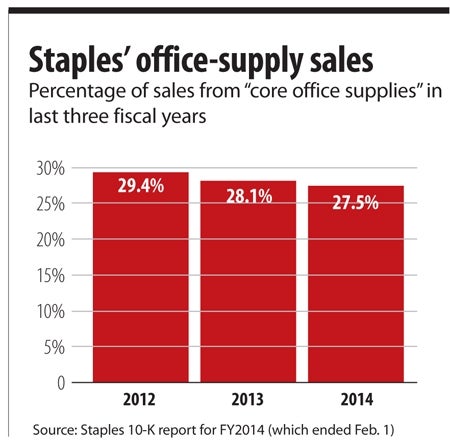A critical element to a company’s long-term viability is how it handles change: How well can it roll with the punches and adjust? Or does it keep on taking punches until it falls to the mat?
The global office supply retailer Staples, based in Framingham, began facing such a change within the last two years, when it decided to downsize its traditional brick-and-mortar retail store business by closing 107 stores and placing a heavier focus on web sales. Earlier this month, it announced it would close up to 225 stores by the end of next year, after fourth-quarter sales fell 11 percent.
In two days of trading after the announcement, the company’s stock price plunged more than 14 percent.
Staples’ travails underscore the power of the Internet as a sales channel and a decreasing reliance by businesses on the company’s traditional office supply products, which over the last two years have fallen as a percentage of Staples’ revenue sources.
The increasing ubiquity of information technology and the growing use of the cloud are transforming how businesses and consumers shop for and use a wide variety of products and services. No one is immune. Even an industry leader like Staples has to meet that transformation.
Staples, already armed with a robust online business, is not the first retailer to face that challenge (Remember Borders?) and certainly won’t be the last.
How they face it and return to growth mode, however, may take another significant innovation in their business model.
Read more
Union objects to postal centers in Staples stores
Staples announces changes to its executive team
Flush with cash: Public firms raking in profits, hanging onto cash

